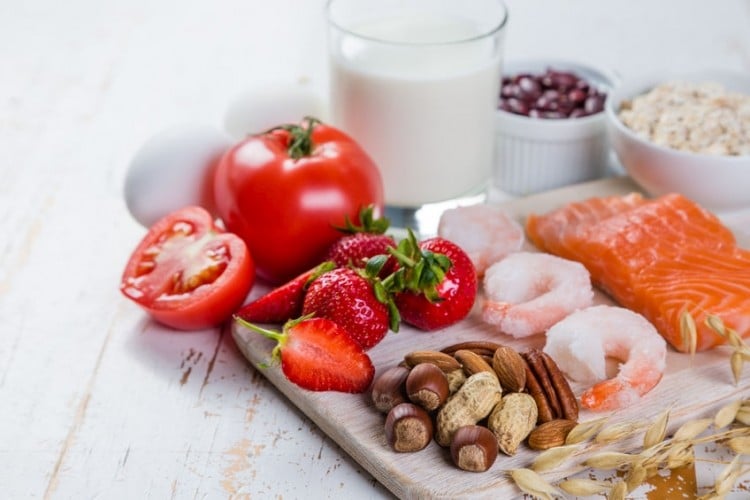Histamine Accumulation Syndrome: Causes, Symptoms, and the Correct Approach

Histamine accumulation syndrome is sometimes incorrectly referred to as “histamine intolerance.” Although the term is commonly used, it’s important to understand that this is not an intolerance in the classic sense (such as lactose intolerance, which is linked to a well-defined enzyme deficiency, or gluten intolerance—both of which can be diagnosed with specific tests).
Let’s take a closer look at what it actually is.
When our body is inflamed, it may have difficulty properly metabolizing histamine, a substance found in various foods and naturally produced by the body. However, it’s important to clarify that histamine is not always the main cause of the disorder, and that drastically eliminating histamine-containing foods is a debated topic—one that may even be harmful to nutritional balance.
When our body is inflamed, it may have difficulty properly metabolizing histamine, a substance found in various foods and naturally produced by the body.
What is histamine?
Histamine is a molecule that plays a fundamental role in various physiological processes. It is mainly produced by immune system cells and is best known for its involvement in allergic and inflammatory reactions. For example, when the body comes into contact with an allergen, histamine is released in large amounts, causing typical symptoms such as itching, swelling, and redness.
However, histamine is not only linked to allergies—it also performs important functions in the nervous system, where it acts as a neurotransmitter, influencing sleep, appetite, and body temperature regulation. In addition, histamine is involved in the regulation of stomach acid secretion, helping to stimulate the production of gastric juices.
Although it is a substance naturally present in the body, an excess of histamine—often associated with ongoing inflammatory processes—can lead to various disorders.
Causes of Histamine Buildup
Excess histamine in the body can result from various factors, including a deficiency of the enzyme diamine oxidase (DAO), which is responsible for breaking it down in the intestines. But how is it possible that someone can consume histamine-rich foods for years without any issues and then suddenly develop symptoms? One possible explanation is the gradual accumulation of histamine associated with a state of systemic inflammation, which may impair the body’s ability to eliminate it properly.
Factors that may contribute to this situation include:
- Intestinal disorders (irritable bowel syndrome, Crohn’s disease, celiac disease)
- Use of medications that alter gut flora (antibiotics, antiarrhythmics, painkillers, antihypertensives, antacids)
- Excessive consumption of sugar, sweeteners, and alcohol
- Diet lacking in nutritional variety
- Stress and hormonal imbalances
- Alterations in gut microbiota, which affect histamine breakdown
All of these factors can easily create a pro-inflammatory environment that promotes the production of inflammatory cytokines and histamine itself. Inflammatory and allergic-like reactions are not only dependent on histamine but also on other cytokines involved in inflammatory processes. We are well aware that repetitive eating patterns, linked to excessive consumption, can be the cause of various inflammatory symptoms.
Moreover, as we have seen, histamine is produced by the body and performs various essential functions for life itself, but it must also be properly metabolized and neutralized to avoid dangerous accumulation. DAO is the enzyme responsible for breaking down excess histamine, preventing undesirable effects.
Symptoms related to excess histamine occur when the DAO enzyme can no longer neutralize it adequately. This may be due to an increase in histamine production, for example, in the presence of an inflammatory process. The most common symptoms include:
- Intestinal issues (bloating, diarrhea, nausea, cramps, flatulence)
- Headaches and migraines
- Skin rashes, itching, hives
- Respiratory issues, asthma, rhinitis
- Tachycardia
- Worsening of allergic symptoms
In some cases, excessive consumption of histamine-rich foods can worsen existing symptoms, especially in individuals with widespread inflammation or those who are allergic to other foods or environmental allergens.
The Role of Nutrition
The amount of histamine present in food depends on many factors, including preparation methods, hygiene conditions, and fermentation duration. Some of the foods that contain the highest levels include:
- Aged and blue cheeses
- Alcohol (especially champagne, red wine, and beer)
- Cured meats
- Canned tuna and smoked fish
- Sauerkraut, eggplants, tomatoes, spinach, and pineapple
Contrary to what one might think, completely eliminating these foods is not the ideal solution. As often happens with diets that exclude entire food groups, there is a risk of negatively affecting our immune responses to those foods in the long term.
So, what should you do if you suspect a histamine overload?
It’s better to adopt a personalized approach that helps lower inflammation levels and restores the body’s ability to eliminate excess histamine. In particular, it is useful to consider:
- The body’s overall inflammatory state and glycation processes can, in fact, worsen the situation. The PerMè Medical Program can support the reduction of food- and sugar-related inflammatory responses, promote gut health, and improve clinical symptoms.
- The activity level of the DAO enzyme, which can be assessed through a specific blood test.
- Enzymatic support to help facilitate the metabolism of histamine.
Conclusions
Histamine-related reactions are often just a manifestation of a broader issue: systemic inflammation. Rather than demonizing foods that are slightly higher in histamine and adopting overly restrictive diets, it is more effective to focus on reducing the body’s overall inflammation levels. This can be achieved through a balanced and personalized diet, digestive enzyme support, and identifying the true causes of symptoms—avoiding the mistake of unnecessarily excluding important (and often delicious) foods from your daily diet.
Edited by The scientific editorial Team GEK Lab








